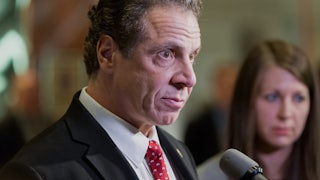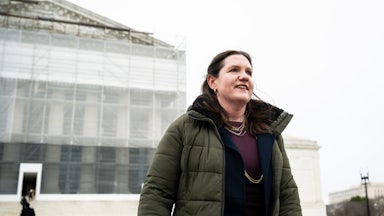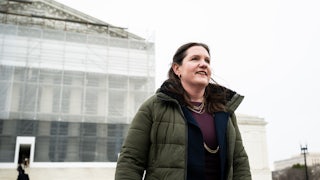Do you know anybody who doesn’t love community colleges? Me neither. They furnish job training that businesses no longer bother to provide. They provide skills that K-12 education is supposed to teach but often doesn’t, and they’re a bridge to a four-year college degree. Democrats love them. Republicans, though mostly hostile to higher education, make an exception for community colleges. “Community colleges,” says Peter Granville, senior policy associate at the Century Foundation, “are some of the most appreciated and widely approved institutions remaining in the United States.”
During the 2020 campaign, candidate Joe Biden promised two years’ free tuition and fees at community college or at a public four-year university. After the election, that was whittled down to funding tuition and fees only at community college, where you can get an associate degree in two years. Over 10 years, the federal government would pay 75 percent of the average national cost (currently that’s $3,700); states would pay the rest. Then that got whittled down to a five-year program in which the feds would pay 100 percent of the average national cost and then ratchet their contribution down gradually to 80 percent by 2028.
Last week, that got whittled down to nothing. The program is out of the Build Back Better reconciliation package. And one of the reasons, it turns out, is that four-year colleges lobbied against it.
That isn’t the only reason free community college tuition got bounced from the bill. It isn’t even the primary reason. But it’s the most shocking reason. Which may explain why I couldn’t get anybody to confirm precisely which four-year colleges lobbied on this. One source very reluctantly told me of hearing secondhand that it was a public university that resides in a state I won’t name. My telephone and email queries to relevant parties at this university went unanswered, which certainly raises suspicions. But that’s as far as this cloak-and-dagger caper took me.
The main reason the free community college tuition proposal got bounced from the bill, President Biden told a CNN town hall last week, was that West Virginia Senator Joe Manchin “and one other person [have] indicated that they will not support free community college.” Manchin was the main obstacle; the “other person” presumably was the reclusive Senator Kyrsten Sinema of Arizona, though at least some supporters of the bill thought Sinema was still gettable. Manchin, who last summer stated in a memo, “No additional handouts … or transfer payments” unrelated to families and health, and none of the latter unless they were means tested, hardened his opposition to the tuition proposal in the last few weeks. According to the Century Foundation’s Granville, the proposal Manchin was instrumental in killing would have furnished West Virginia with $40 million annually in tuition benefits extended to 22,000 students. (Sorry, kids!) Sinema’s opposition was perhaps less firm because Arizona would, according to Granville, get $400 million annually in tuition benefits extended to 237,000 students.
No Republican was ever going to vote for the reconciliation bill, with free community college tuition and fees or without it, because Republicans hate Democrats much more than they love community colleges. Some Republicans opposed the free tuition program on principle. New Hampshire’s GOP Governor Chris Sununu told The Wall Street Journal that if students didn’t pay part of their tuition, they wouldn’t hit the books. Never mind that if they didn’t get to go to community college, it’s a certainty they wouldn’t hit the books.
Or maybe Sununu’s opposition wasn’t principled at all. The proposal favored states where tuition charges for community college are lower than the national average. Those states would end up with a surplus that they could spend on four-year public colleges. In New Hampshire, by contrast, tuition charges are nearly twice the national average. Under the proposal, states where tuition charges are above the national median would get no surplus and would have to dedicate more state funds to making up the difference. (Sinema’s Arizona—again, per Granville’s calculations—would get $227 million in surplus funds; Manchin’s West Virginia, where community college tuition and fees are a whisker below the national average, would get a tiny surplus of about $1 million.)
The final community college proposal wasn’t exactly cheap, but neither was it intimidatingly high: $83 billion over five years. That’s less than one-quarter the cost of the provision in the reconciliation bill that provides free preschool, according to The New York Times.
But that’s not what’s eating me. What’s eating me is that private four-year colleges lobbied against the plan. Why on earth would they do that?
“They want paying customers,” explains Max Lubin, chief executive officer of RISE, a group that organizes student-led campaigns to reduce or eliminate the cost of attending college. If community college were free, some students would choose community college over a four-year college. The competition would be especially bothersome to for-profit colleges, which compete most directly for this population.
What about four-year colleges that effectively double as community colleges by offering associate degrees? “They would rather get Pell money,” Lubin said. “That’s free money. Then they can hike tuition anyway.” (Community colleges that participated in the free tuition program would be restricted in how much they could raise tuition.) “Pell money” is Pell grant money, which is given to lower-income students. Biden’s Build Back Better plan was supposed to increase the maximum Pell grant, currently $6,495, by $1,400, but that got whittled down to $500. Biden has hinted the final bill may bump that up a bit to make up partly for the loss of free community college.
The National Association of Independent Colleges and Universities didn’t lobby against free community college tuition, according to its president, Barbara K. Mistick. But it didn’t lobby for it, either. “Our efforts have been squarely focused on advocating for increasing the Pell Grant,” she told me by email. Mistick isn’t exactly enthusiastic about free community college. She told The Wall Street Journal last week that it was an untested program that would require building a new bureaucracy. “If you want to have the greatest impact, if you want to touch students in every single sector, the Pell program would do that,” she told the Journal. “You don’t want to do something that is going to take years.”
For four-year colleges, opposing free community college may be penny-wise and pound foolish. Several people pointed out to me that some of the students who acquire a free associate degree will transfer to four-year institutions; many in this group might never have attended college at all. Also, tuition and fees at four-year colleges are so much higher than at community colleges that unless a four-year college gives the student in question a free ride (thereby, in Sununu’s eyes, tempting said student to goof off), it’s a stretch to say it’s competing with community colleges at all. (Average tuition at a public four-year college is $10,560 for in-state students and $27,020 for out-of-state students, and at a private four-year college, it’s $37,650.) And don’t forget that states that don’t charge an arm and a leg for community college stood to receive surpluses that they could then have spent on their public colleges.
Yet four-year colleges and universities lobbied against free community college. It speaks volumes that the specific organizations that did so have gone into hiding. So does the silence we’re mostly hearing from four-year colleges on the demise of this very good idea. To me it sounds like a dowager’s murmur: “Not our class, dear.”










